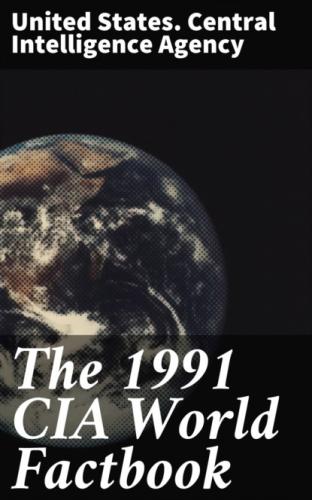_#_Currency: Communaute Financiere Africaine franc (plural—francs); 1 CFA franc (CFAF) = 100 centimes
_#_Exchange rates: Communaute Financiere Africaine francs (CFAF) per US$1—256.54 (January 1991), 272.26 (1990), 319.01 (1989), 297.85 (1988), 300.54 (1987), 346.30 (1986), 449.26 (1985)
_#_Fiscal year: 1 July-30 June
_*Communications #_Railroads: 1,003 km total; 858 km 1.000-meter gauge, 145 km 0.600-meter gauge
_#_Highways: about 65,000 km total; includes 2,682 km bituminous, 30,000 km unimproved earth, 32,318 km gravel, earth, and improved earth
_#_Inland waterways: 2,090 km; of decreasing importance
_#_Ports: Douala
_#_Merchant marine: 2 cargo ships (1,000 GRT or over) totaling 24,122 GRT/33,509 DWT
_#_Civil air: 5 major transport aircraft
_#_Airports: 60 total, 52 usable; 10 with permanent-surface runways; 1 with runways over 3,659 m; 5 with runways 2,440–3,659 m; 21 with runways 1,220–2,439 m
_#_Telecommunications: good system of open wire, cable, troposcatter, and radio relay; 26,000 telephones; stations—10 AM, 1 FM, 1 TV; 2 Atlantic Ocean INTELSAT earth stations
_*Defense Forces #_Branches: Army, Navy (including Marines), Air Force; paramilitary Gendarmerie
_#_Manpower availability: males 15–49, 2,628,909; 1,324,899 fit for military service; 125,421 reach military age (18) annually
_#Defense expenditures: $219 million, 1.7% of GDP (1990 est.) % @Canada *Geography #_Total area: 9,976,140 km2; land area: 9,220,970 km2
_#_Comparative area: slightly larger than US
_#_Land boundaries: 8,893 km with US (includes 2,477 km with Alaska)
_#_Coastline: 243,791 km
_#_Maritime claims:
Continental shelf: 200 m (depth) or to depth of exploitation;
Exclusive fishing zone: 200 nm;
Territorial sea: 12 nm
_#_Disputes: maritime boundary disputes with France (Saint Pierre and Miquelon) and US
_#_Climate: varies from temperate in south to subarctic and arctic in north
_#_Terrain: mostly plains with mountains in west and lowlands in southeast
_#_Natural resources: nickel, zinc, copper, gold, lead, molybdenum, potash, silver, fish, timber, wildlife, coal, crude oil, natural gas
_#_Land use: arable land 5%; permanent crops NEGL%; meadows and pastures 3%; forest and woodland 35%; other 57%; includes NEGL% irrigated
_#_Environment: 80% of population concentrated within 160 km of US border; continuous permafrost in north a serious obstacle to development
_#_Note: second-largest country in world (after USSR); strategic location between USSR and US via north polar route
_*People #_Population: 26,835,036 (July 1991), growth rate 1.1% (1991)
_#_Birth rate: 14 births/1,000 population (1991)
_#_Death rate: 7 deaths/1,000 population (1991)
_#_Net migration rate: 5 migrants/1,000 population (1991)
_#_Infant mortality rate: 7 deaths/1,000 live births (1991)
_#_Life expectancy at birth: 74 years male, 81 years female (1991)
_#_Total fertility rate: 1.7 children born/woman (1991)
_#_Nationality: noun—Canadian(s); adjective—Canadian
_#_Ethnic divisions: British Isles origin 40%, French origin 27%, other European 20%, indigenous Indian and Eskimo 1.5%
_#_Religion: Roman Catholic 46%, United Church 16%, Anglican 10%
_#_Language: English and French (both official)
_#_Literacy: 99% (male NA%, female NA%) age 15 and over can read and write (1981 est.)
_#_Labor force: 13,380,000; services 75%, manufacturing 14%, agriculture 4%, construction 3%, other 4% (1988)
_#_Organized labor: 30.6% of labor force; 39.6% of nonagricultural paid workers
_*Government #_Long-form name: none
_#_Type: confederation with parliamentary democracy
_#_Capital: Ottawa
_#_Administrative divisions: 10 provinces and 2 territories*; Alberta,
British Columbia, Manitoba, New Brunswick, Newfoundland,
Northwest Territories*, Nova Scotia, Ontario, Prince Edward Island,
Quebec, Saskatchewan, Yukon Territory*
_#_Independence: 1 July 1867 (from UK)
_#_Constitution: amended British North America Act 1867 patriated to Canada 17 April 1982; charter of rights and unwritten customs
_#_Legal system: based on English common law, except in Quebec, where civil law system based on French law prevails; accepts compulsory ICJ jurisdiction, with reservations
_#_National holiday: Canada Day, 1 July (1867)
_#_Executive branch: British monarch, governor general, prime minister, deputy prime minister, Cabinet
_#_Legislative branch: bicameral Parliament (Parlement) consists of an upper house or Senate (Senat) and a lower house or House of Commons (Chambre des Communes)
_#_Judicial branch: Supreme Court
_#_Leaders:
Chief of State—Queen ELIZABETH II (since 6 February 1952), represented by Governor General Raymond John HNATSHYN (since 29 January 1990);
Head of Government—Prime Minister (Martin) Brian MULRONEY (since 4 September 1984); Deputy Prime Minister Donald Frank MAZANKOWSKI (since NA June 1986)
_#_Political parties and leaders:
Progressive Conservative, Brian MULRONEY;
Liberal, Jean CHRETIEN;
New Democratic, Audrey McLAUGHLIN
_#_Suffrage: universal at age 18
_#_Elections:
House of Commons—last held 21 November 1988 (next to be held by November 1993); results—Progressive Conservative 43.0%, Liberal 32%, New Democratic Party 20%, other 5%; seats—(295 total) Progressive Conservative 159, Liberal 80, New Democratic Party 44, independent 12
_#_Communists: 3,000
_#_Member of: ACCT, AfDB, AG (observer), APEC, AsDB,
BIS, C, CCC, CDB, COCOM, CP, CSCE, EBRD, ECE, ECLAC, FAO, G-7, G-8, G-10,
GATT, IADB, IAEA, IBRD, ICAO, ICC, ICFTU, IDA, IEA, IFAD, IFC, ILO, IMF,
IMO, INMARSAT, INTELSAT, INTERPOL, IOC, IOM (observer), ISO, ITU,
LORCS, NATO, NEA, OAS, OECD, PCA, UN, UNCTAD, UNDOF, UNESCO, UNFICYP,
UNHCR, UNIDO, UNIIMOG, UNTSO, UPU, WCL, WHO, WIPO, WMO,
WTO
_#_Diplomatic representation: Ambassador Derek BURNEY; Chancery at 1746 Massachusetts Avenue NW, Washington DC 20036; telephone (202) 785–1400; there are Canadian Consulates General in Atlanta, Boston, Buffalo, Chicago, Cleveland, Dallas, Detroit, Los Angeles, Minneapolis, New York, Philadelphia, San Francisco, and Seattle;
US—Ambassador Edward N. NEY; Embassy at 100 Wellington Street, K1P 5T1, Ottawa (mailing address is P. O. Box 5000,
